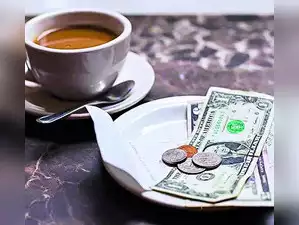Tags
Tea, rice exports to Iran may take a hit on rial devaluation
Synopsis
Iran’s currency devaluation threatens Indian tea and basmati rice exports. The increased cost of imports may hinder sales of premium orthodox tea, while basmati rice exporters face insurance and pricing challenges. However, some believe the impact on rice may be mitigated by government subsidies.

Kolkata: Exports of premium quality Indian orthodox tea and basmati rice to Iran, a major market for both commodities, may take a hit as the West Asian nation has further devalued its currency, making imported products pricier in the domestic market.
A new official price for the US dollar has been fixed by the Central Bank of Iran (CBI) at 596,470 rials, up from 42,0000 rials in November, which will make import costlier for the country.
Iran consumes 30-35 million kg of orthodox tea, which is almost half of India’s annual production of 75-80 million kg of this premium tea. Orthodox tea is produced using the traditional methods of tea production which includes plucking, withering, rolling, oxidation and drying. All these are largely done manually and therefore these teas command a premium in the international markets.
Mohit Agarwal, director of Asian Tea, a leading tea exporter to Iran, said, “Last month the exchange rate for dollar was 42,0000 Iranian rials, which has suddenly shot up. This will impact exports of premium quality orthodox teas to Iran as importers will have to shell out more rials for a kg of Indian tea. However, the medium grade of orthodox teas will find its way into the Iranian market.”
Agarwal said that the average export price of Assam orthodox tea this year has been hovering around $3 per kg. “Sri Lankan orthodox tea, our competitor in the Iranian market, will be hard hit as their price is $4.2 per kg. In that way, Indian tea is more competitive in the Iranian market. However, we must wait and watch how things shape up in the coming months.”
Tea exports from India are expected to touch 260 million kg in calendar 2024 compared to 220 million kg in 2023. While the Tea Board has not yet come out with the final figures, industry officials said demand was robust during the year. Tea exports to Iran had fallen drastically in 2022 due to the payment crisis there, but it started growing from 2023.
Basmati rice exports are facing a similar ordeal. Exporters are worried about the devaluation of Iranian currency. A basmati exporter, who did not want to be identified, said, “Insurance companies have stopped giving insurance on exports to Iran. Thus, the prices of basmati have fallen by ₹800 per quintal as the exporters and millers are no longer purchasing the quantum as they were earlier buying. The currency devaluation is another blow to the trade.”
India is the largest exporter of basmati rice in the world and the country had exported 5.24 million tonnes of basmati rice in FY24. Of this, Iran accounted for a quarter of the total exports of the country.
However, Satish Goel, president of All India Rice Exporters Association, said, “The currency devaluation will not impact Iranian imports of basmati rice as their government is yet to communicate to us on subsidised rate. As of now, Iran is allowing rice importers to access the US dollar at a subsidised price of 285,000 per Iranian rial.”
https://economictimes.indiatimes.com/news/economy/foreign-trade/tea-rice-exports-to-iran-may-take-a-hit-on-rial-devaluation/articleshow/116448783.cms?from=mdrPublished Date: December 20, 2024






